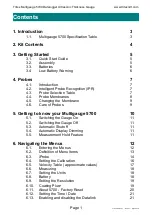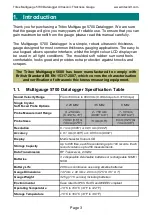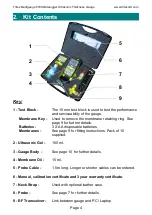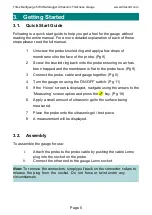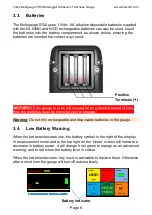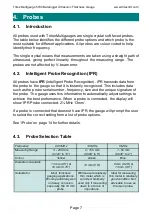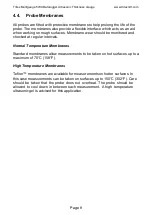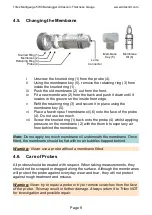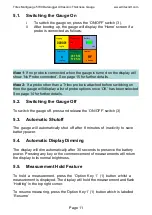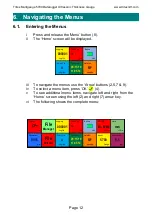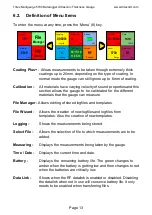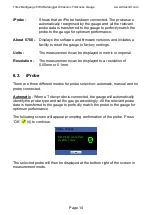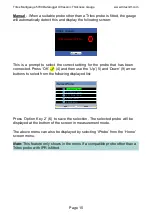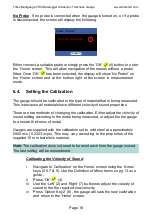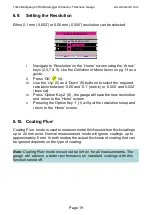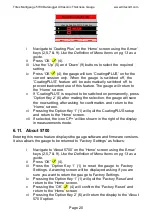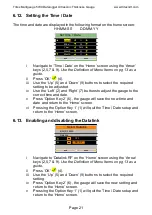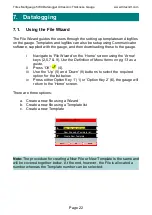
Tritex Multigauge 5700 Datalogger Ultrasonic Thickness Gauge www.tritexndt.com
Page 7
4. Probes
4.1.
Introduction
All probes used with Tritex Multigauges are single crystal soft faced probes.
The table below identifies the different probe options and which probe is the
most suitable for different applications. All probes are colour coded to help
identify their frequency.
The single crystal means that measurements are taken using a straight path of
ultrasound, giving perfect linearity throughout the measuring range. The
probes are not affected by V-beam error.
4.2.
Intelligent Probe Recognition (IPR)
All probes have
IPR
(Intelligent Probe Recognition). IPR transmits data from
the probe to the gauge so that it is instantly recognised. This includes data
such as the probe serial number, frequency, size and the unique signature of
the probe. The gauge uses this information to automatically adjust settings to
achieve the best performance. When a probe is connected, the display will
show ‘IPR Probe connected: 2¼ MHz 13mm’.
If a probe is connected that does not have IPR, the gauge will prompt the user
to select the correct setting from a list of probe options.
See ‘iProbe’ on page 14 for further details.
4.3.
Probe Selection Table
Frequency
2.25 MHz
3.5 MHz
5 MHz
Measuring Range
3 - 250 mm
(0.120” to 10”)
2 - 150 mm
(0.080” to 6”)
1 - 50 mm
(0.040” to 2”)
Colour
Yellow
Green
Blue
Diameters Available
13 mm (0.5”) &
19 mm (0.75”)
13 mm (0.5”)
6 mm (0.25”) &
13 mm (0.5”)
Suitable for
Most thickness
gauging applications.
Works particularly well
on heavy corrosion,
especially the 19 mm
probe.
Will measure relatively
thin metal which is
corroded. Normally
used only if measuring
down to 2 mm is of
importance.
Ideal for measuring
thin metal in relatively
good condition. Not
advisable to use as
the main probe.


